Dysport vs Botox: What's the Difference?
When it comes to combating facial wrinkles and achieving a more youthful appearance, many individuals turn to cosmetic injectables such as Dysport and Botox.
These injectable treatments have gained immense popularity in recent years due to their ability to minimize the appearance of wrinkles and rejuvenate the face. However, despite their similarities in terms of being botulinum toxin type A injectables, there are key differences between Dysport and Botox that patients should be aware of.
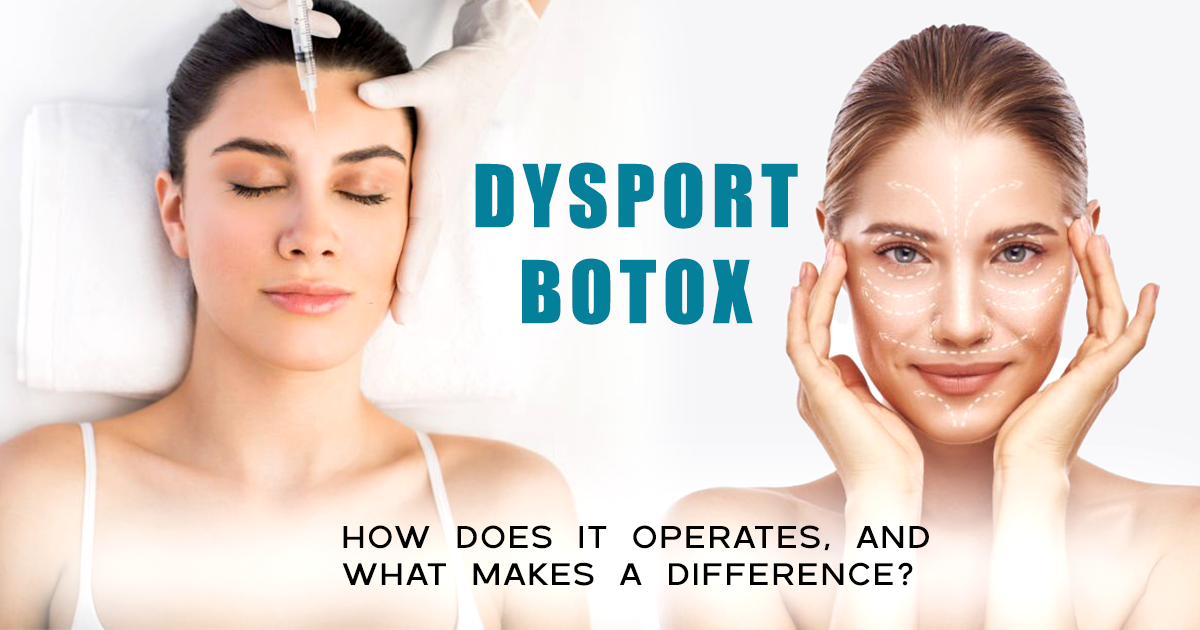
So Which One is Better?
One significant difference between Dysport and Botox lies in their formulation. While both products contain botulinum toxin type A, they have variations in terms of protein content and molecular structure.
Dysport contains smaller molecules compared to Botox, which can result in a faster onset of action. Due to its smaller size, Dysport has the ability to spread more widely within the muscles that contribute to facial expressions.
This makes it particularly effective for treating larger areas such as forehead lines or “worry lines,” as it can diffuse across a broader surface area. On the other hand, Botox tends to stay more localized at the injection site due to its larger molecular size.
This makes it an ideal choice for targeting specific areas with precision, such as glabellar lines or “frown lines” between the eyebrows. The localized effect provided by Botox injections allows for targeted muscle relaxation, which can result in smoother skin and diminished wrinkles in specific areas.
Which One is More Cost-Effective?
Another aspect where these two injectables differ is their dosing conversion ratio. The conversion ratio refers to how much Dysport is needed compared to Botox for achieving comparable results.
Typically, a higher amount of Dysport is required than Botox due to its smaller molecular size and diffusing nature within muscle tissues. Therefore, patients considering switching from one product to another should consult with their healthcare provider regarding appropriate dosages.
Moreover, the duration of effects can also vary between Dysport and Botox. While the onset of action might be quicker with Dysport, Botox tends to provide longer-lasting results.
This discrepancy can be attributed to several factors, including differences in protein content and injection technique. Generally, Dysport may last for approximately three to four months, while Botox can provide results for up to four to six months.
While Dysport and Botox are both effective treatments for reducing the appearance of wrinkles and rejuvenating facial aesthetics, they do exhibit key differences that should be taken into consideration. The choice between these cosmetic injectables depends on individual preferences, treatment goals, and the expertise of healthcare providers.
By understanding the variations in formulation, dosing conversion ratio, and duration of effects between Dysport and Botox, patients can make informed decisions about which option is best suited for their desired outcomes. As with any medical treatment or procedure, it is crucial to consult with a qualified healthcare professional who can offer personalized advice based on individual needs.
Dysport results
When considering the results of Dysport, it is important to understand its effectiveness in addressing various facial wrinkles and lines.
Dysport, like Botox, is a neurotoxin derived from the botulinum toxin type A. It is primarily used to reduce the appearance of glabellar lines, commonly known as frown lines or vertical lines between the eyebrows. These lines are formed due to repeated muscle contractions caused by facial expressions over time.
Dysport works by blocking nerve signals that control muscle contractions, effectively relaxing the targeted facial muscles responsible for creating unwanted wrinkles and lines. This injectable treatment targets specific muscles, allowing for a more youthful appearance by temporarily smoothing out forehead wrinkles and reducing the prominence of frown lines.
One key difference between Dysport and Botox lies in their diffusion properties. Dysport spreads more easily than Botox, which means it can cover a larger area with fewer injections.
This quality makes Dysport particularly effective in treating larger areas like forehead lines. In terms of efficacy, clinical trials have shown that Dysport provides noticeable results within a few days after treatment, with maximum effects achieved within one to two weeks.
These effects typically last for three to four months before gradually wearing off. However, it’s important to note that individual experiences may vary based on factors such as metabolism and dosage.
Furthermore, it is worth mentioning that minor side effects are associated with Dysport injections, which are usually mild and temporary. These may include slight bruising or swelling at the injection site or headaches immediately following the procedure; however, these effects generally subside quickly.
Dysport has proven itself as one of the effective treatments for glabellar lines and other facial wrinkles caused by muscle contractions over time. By targeting specific muscles responsible for these unwanted lines through its unique diffusion properties and blocking nerve signals that trigger muscle contractions, Dysport temporarily relaxes the facial muscles, smoothing out the appearance of wrinkles.
While individual experiences may vary, Dysport typically delivers noticeable results within days and can last for several months. Additionally, its minimal side effects make it a popular choice among those seeking a non-invasive and temporary solution to achieve a more youthful and rejuvenated appearance.
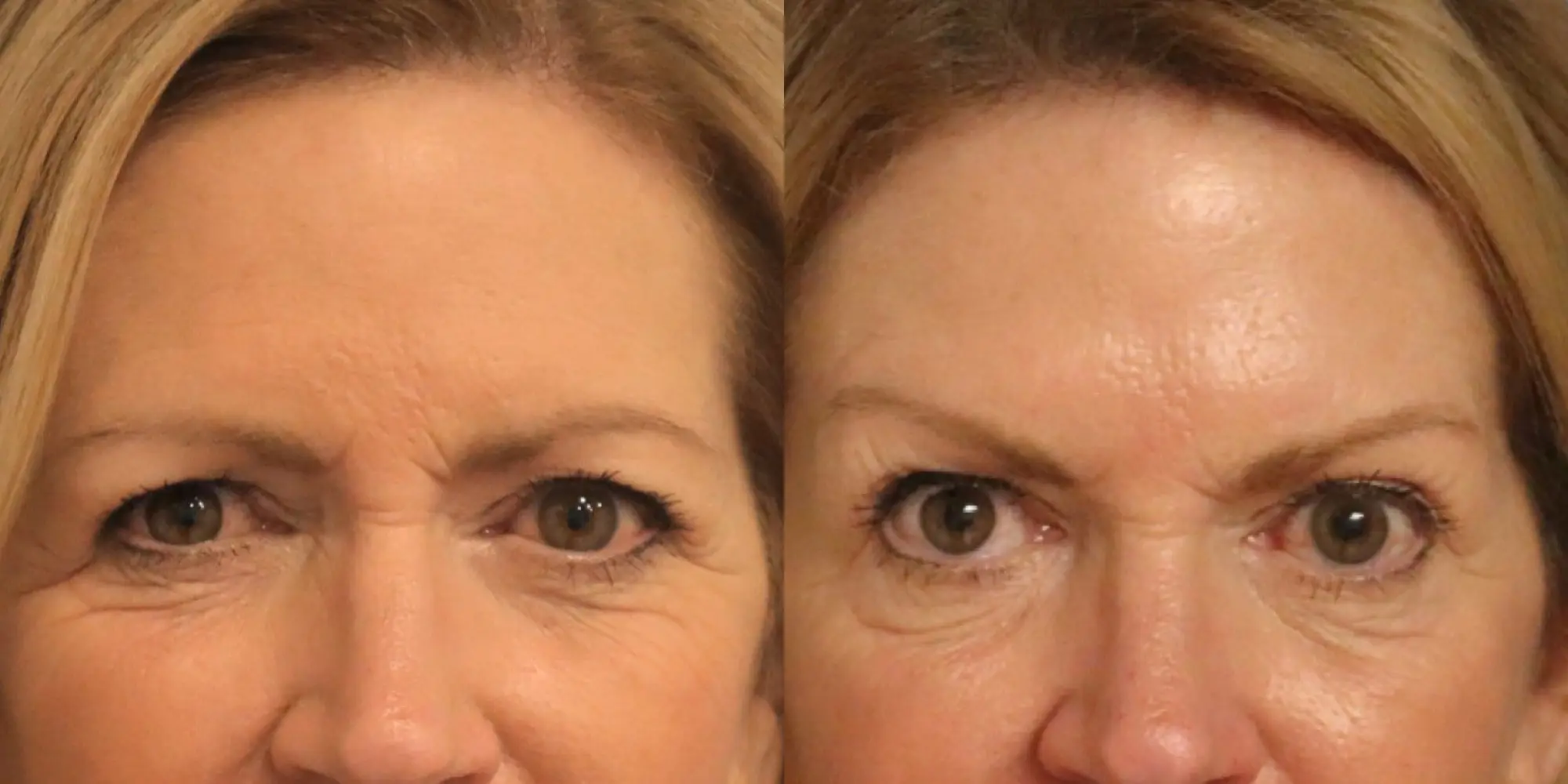
Botox results
Botox, one of the most well-known cosmetic injectables, has gained immense popularity for its effectiveness in reducing the appearance of wrinkles and fine lines on the face. This medical treatment utilizes a purified form of botulinum toxin type A to temporarily paralyze specific facial muscles, resulting in a smoother and more youthful appearance. Botox has proven to be an incredibly effective treatment for various facial wrinkles, including frown lines, forehead lines, and crow’s feet.
When it comes to targeting frown lines, Botox injections are highly successful. Frown lines, also known as glabellar lines or “11” lines between the eyebrows, can develop due to repeated muscle contractions caused by certain facial expressions.
Botox works by blocking nerve signals that cause these muscles to contract excessively, thereby softening the appearance of these vertical creases. Patients often report noticeable results within a week or two after receiving Botox injections for their frown lines.
Forehead wrinkles are another common concern that can be effectively treated with Botox. These horizontal lines can form as a result of aging or repetitive muscle movements such as raising eyebrows or expressing surprise.
By strategically injecting small amounts of Botox into specific areas of the forehead muscles responsible for causing these wrinkles, they can be softened or even eliminated altogether. The effects typically last between three to four months before requiring touch-ups.
What sets Botox apart from other dermal fillers is its ability to specifically target and treat dynamic wrinkles caused by muscle spasms and contractions. Unlike static wrinkles that are visible even at rest, dynamic wrinkles only appear when specific facial expressions are made.
By temporarily relaxing the underlying facial muscles responsible for these movements, Botox effectively reduces the visibility of dynamic wrinkles such as crow’s feet around the eyes and smoker’s lines around the mouth. In terms of minor side effects associated with Botox injections, patients may experience some mild discomfort during the procedure, which is usually well-tolerated.
Temporary redness, swelling, or bruising at the injection sites are common but typically subside within a few days. It’s important to note that Botox should only be administered by a qualified healthcare professional who has experience in cosmetic injectables to ensure optimal results and minimize any potential risks.
Botox has proven to be an exceptional choice for patients seeking an effective solution to facial wrinkles. Its ability to target specific facial muscles responsible for dynamic wrinkles sets it apart from dermal fillers, making it a popular choice for individuals looking for highly precise results.
With proper administration by a qualified professional, Botox can provide significant improvements in the appearance of frown lines, forehead wrinkles, and dynamic wrinkles around the eyes and mouth. Its temporary nature allows patients to maintain their desired youthful appearance while also having control over their treatment options in the long term.
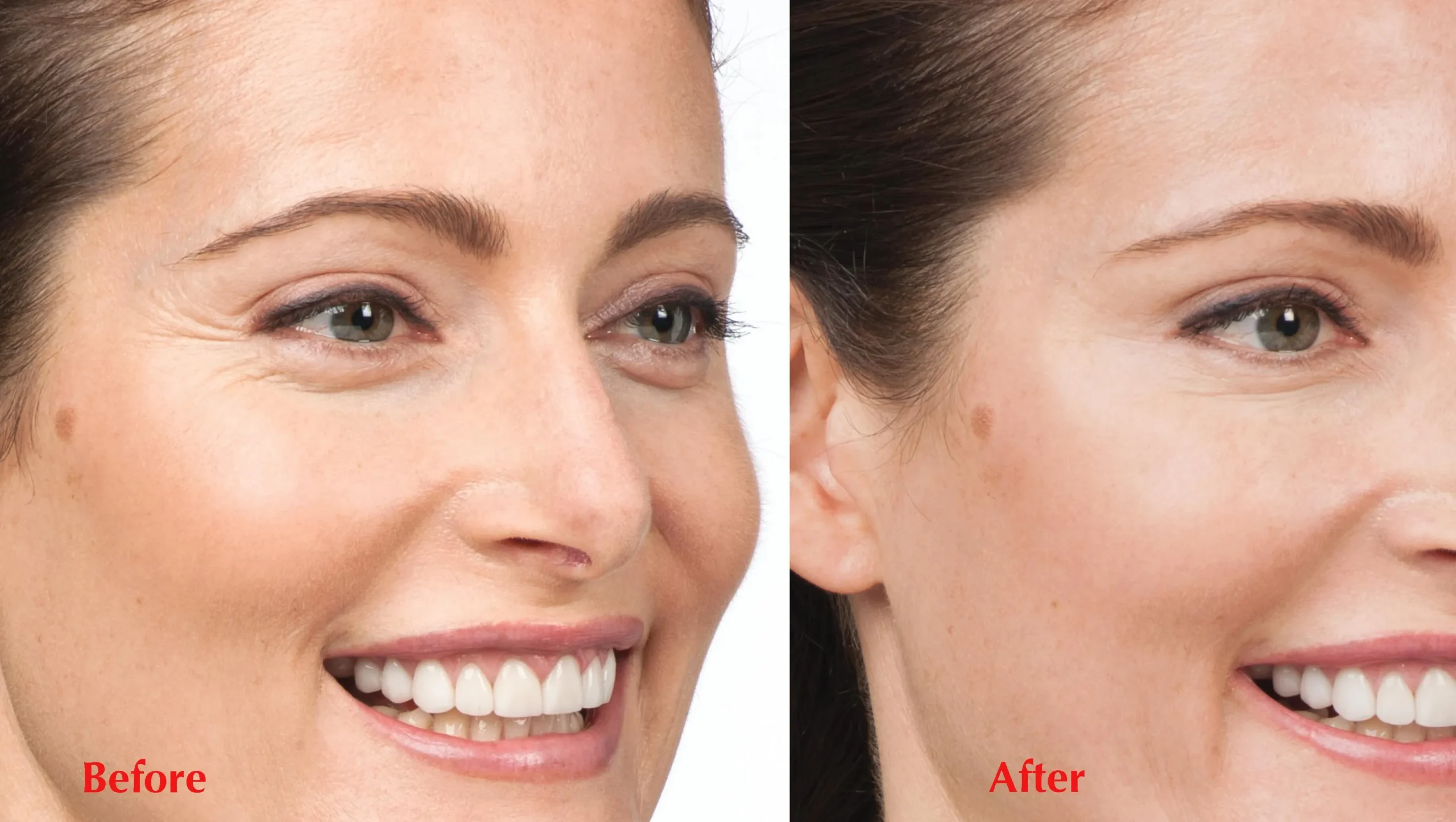
Is There Really a Bad Choice?
Both Botox and Dysport have proven to be effective treatments for reducing the appearance of wrinkles and achieving a more youthful appearance. Whether you choose Botox or Dysport will depend on your personal preferences and the recommendation of your healthcare provider.
Both options work by temporarily paralyzing facial muscles, thereby reducing muscle contractions that lead to the formation of wrinkles. Botox injections have been widely used for many years and have a strong track record in successfully treating various cosmetic concerns such as frown lines, forehead wrinkles, and glabellar lines.
It contains botulinum toxin type A, which blocks nerve signals to the facial muscles responsible for these expressions. The results are typically noticeable within a few days after treatment and can last up to four months.
On the other hand, Dysport also contains botulinum toxin type A but has a slightly different formulation compared to Botox. It spreads more easily beneath the skin and may provide quicker results in some individuals.
Dysport is often used to address moderate to severe glabellar lines between the eyebrows. Like Botox, its effects are temporary but can last up to three months.
Which One Has Less Side Effects?
Minor side effects are possible with both treatments, such as bruising or swelling at the injection site. However, these effects are generally temporary and subside quickly.
It’s important to follow all aftercare instructions provided by your healthcare provider to ensure optimal results and minimize any potential risks. It is worth noting that while both Botox and Dysport effectively target dynamic wrinkles caused by facial expressions, they may not be suitable for all types of facial wrinkles or muscle spasms.
Will I Need Neurotoxins for My Entire Face?
In some cases, additional treatment options like dermal fillers may be recommended alongside or instead of these injectables. Overall, whether you choose Botox or Dysport as your preferred cosmetic treatment option will depend on factors such as your specific concerns, desired outcomes, budgetary considerations, and the expertise of your healthcare provider.
By consulting with a qualified professional, you can make an informed decision that will help you achieve smoother, more rejuvenated skin and boost your self-confidence. Remember, both Botox and Dysport offer effective solutions, allowing you to put your best face forward with a renewed sense of vibrancy and beauty.
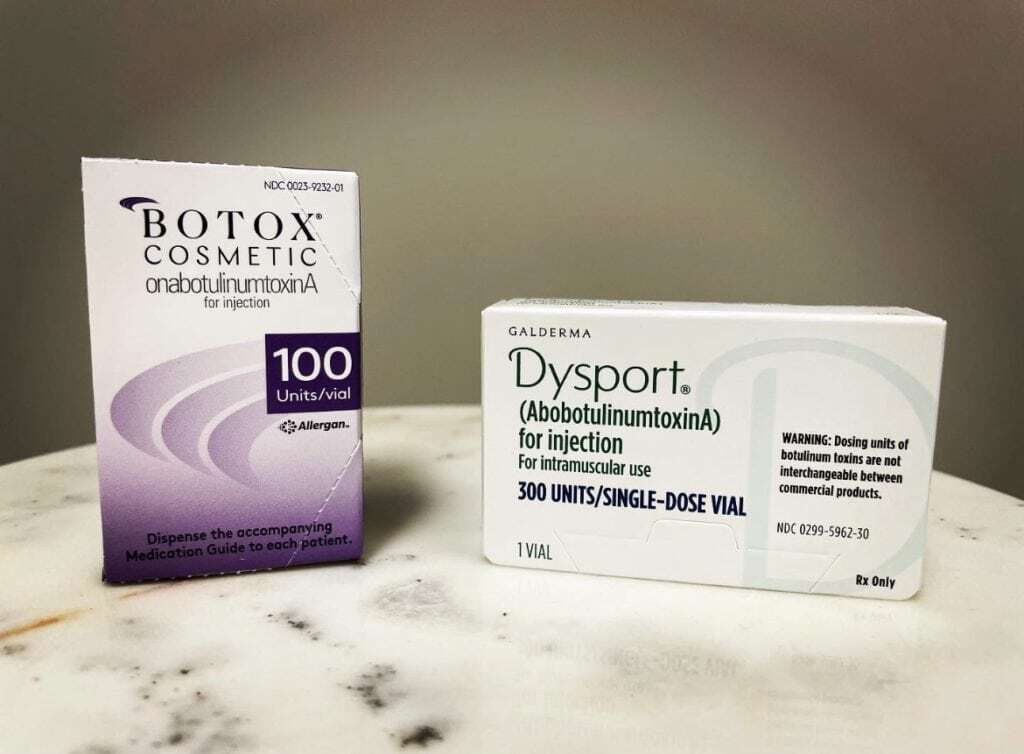



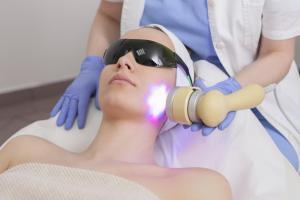

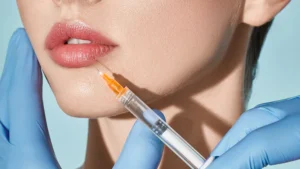
1 thought on “Botox vs. Dysport”
good!!!